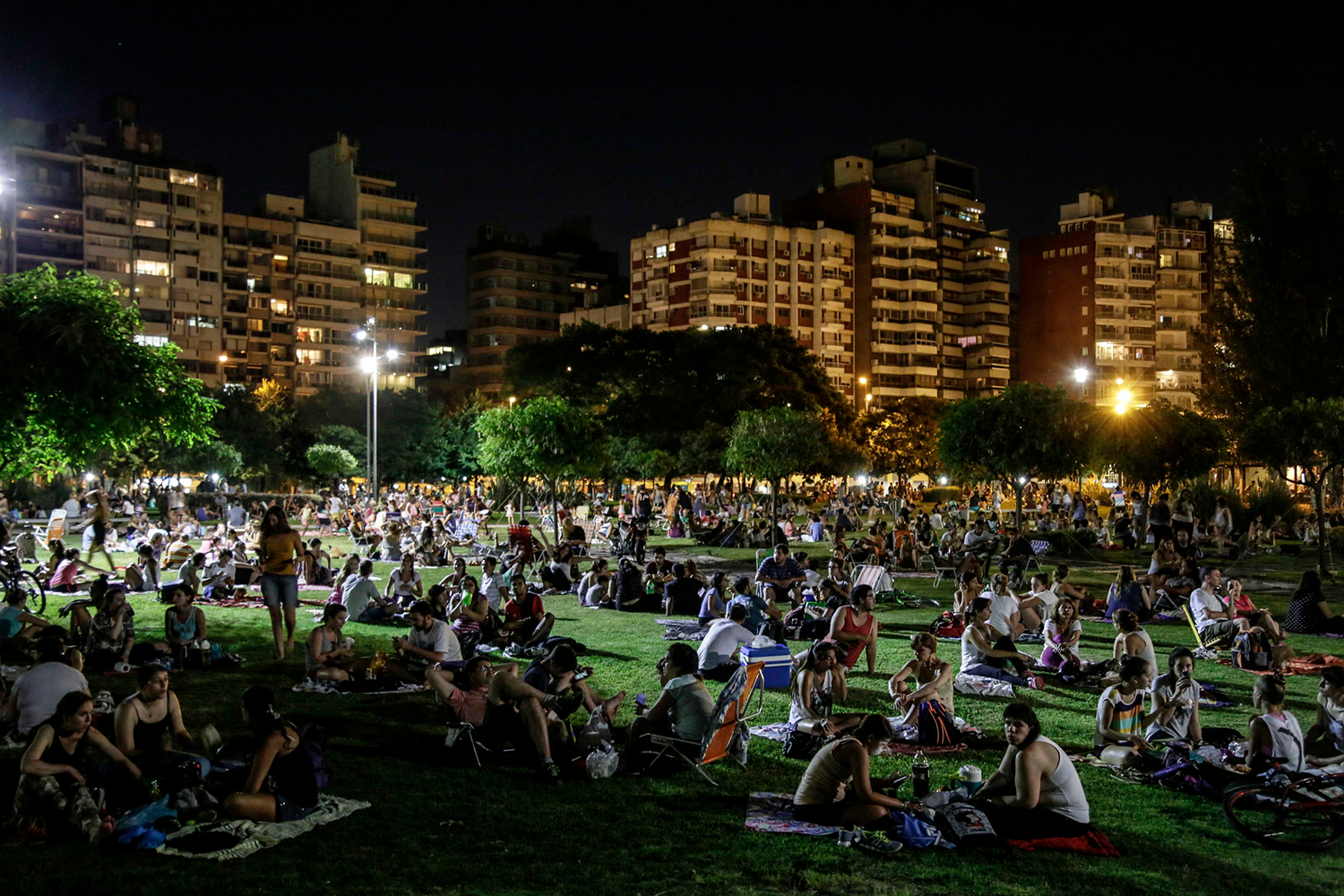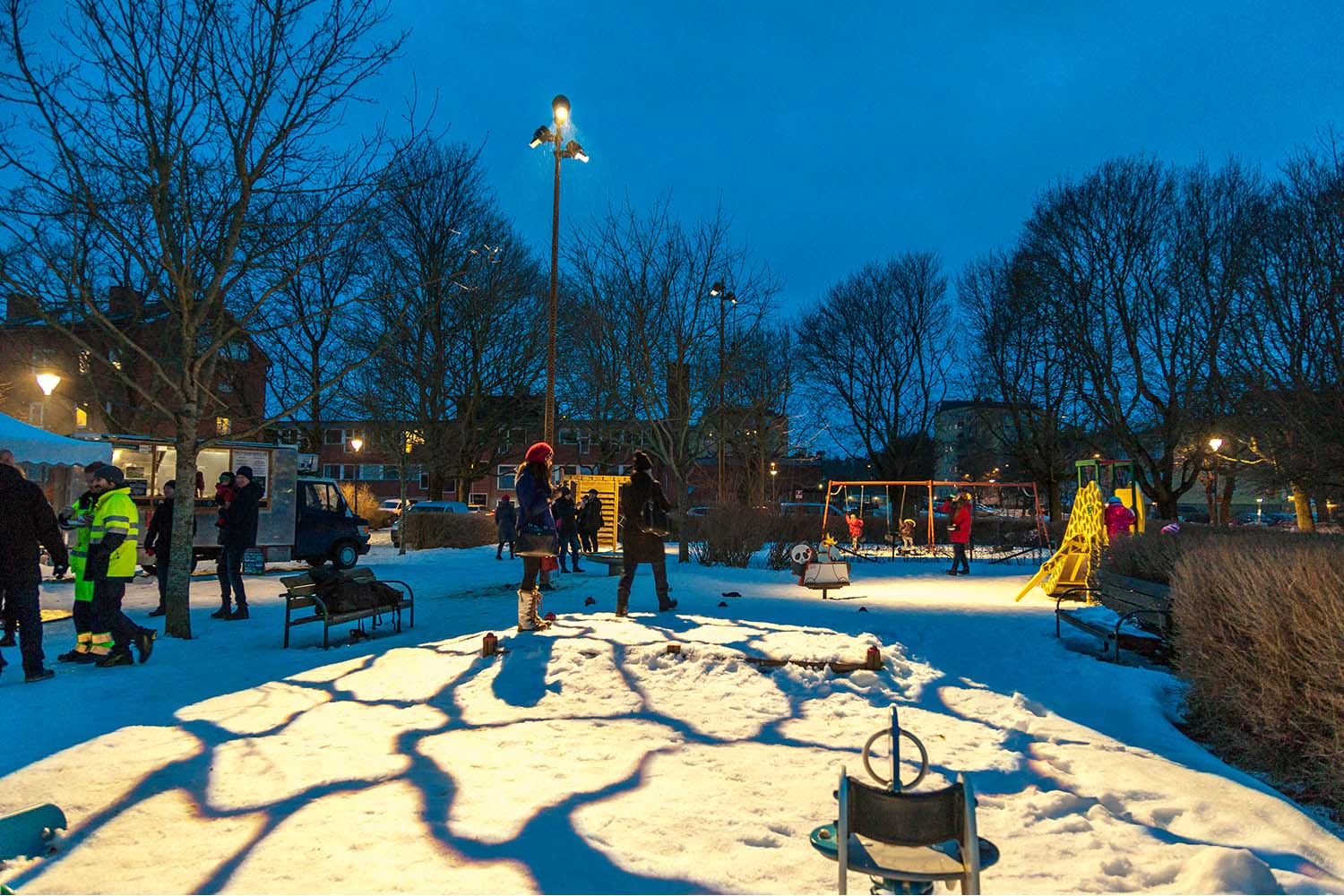


DEVELOPING A NIGHT TIME STRATEGY
Guidance to inspire a new wave of night time planning across the capital

Year
2020 – 2021
Service
Research
Reports
Part 1: Guidance on process, Part 2: Guidance, precedents and case studies, Part 3: COVID-19 and the recovery of public life at night post-lockdown
Client
Greater London Authority (GLA)
Location
London
In 2020, the Greater London Authority (GLA) commissioned Publica to create the most ambitious night time guidance produced by any city in the world. Published in early 2021, it sets out the many benefits for councils, communities and businesses of creating diverse and inclusive night time plans together, with step-by-step guides and inspiring case studies from across the globe on how this can be achieved.





In Hastings, a dynamic light show transformed the covered Bottle Alley walkway.
Image © Traxon e:cue/Jeff Mood
Family-friendly and free events, such as these night picnics in Rosario, Argentina, encourage people to think differently about the use of open spaces at night.
Image © Comunicación de Secretaría de Ambiente y Espacio Público – Municipalidad de Rosario
Low cost projects and lighting interventions can strengthen a neighbourhood character and act as a mechanism for partnership working and collective custodianship of public routes and spaces.
Image © Publica
The city of Stockholm partnered with Clear Channel to help direct homeless people to support centres during particularly cold nights.
Image © Clear Channel
Lighting can encourage outdoor, active play for children after dark, as seen at the Giraffe playground in Uppsala, Sweden.
Image © Annelie Sundin
The night time offers unique opportunities to enrich and diversify the experience of a borough. By developing a night time strategy, local authorities can address such diverse goals as combating loneliness, improving feelings of safety at night, celebrating a wide range of cultures, increasing the wellbeing of night workers, and nurturing the next generation of creative workers, among many more.
Holistic planning for London’s communities between 6pm and 6am is critical to the economic, social and cultural vitality of the city. If we do not protect and nurture London’s vitality at night we put at risk the reasons that social, curious, creative and talented people are drawn to our city and feel proud to call London their home.
Policies that influence the character and use of town centres after 6pm affect everyone. Developing a night time strategy requires a balanced and holistic view. As such, Publica produced guidance that has been compiled with the knowledge that people have different experiences of the city at night, and some face barriers to participation. Achieving the ambitions set out in this guidance will require boroughs to understand and deal with safety concerns at night.
“This is the most far-reaching night time guidance produced by any city in the world. It sets out the many benefits – for councils, communities and businesses – of creating diverse and inclusive night time plans together.”
AMY LAMÉ, NIGHT CZAR
The guidance developed by Publica is addressed to local authorities in London seeking to develop a night time strategy, and covers the creation, delivery and monitoring of a holistic night time strategy over three parts:
— Part 1: Guidance on process
— Part 2: Guidance, precedents and case studies
— Part 3: COVID-19 and the recovery of public life at night post-lockdown
To create the guidance, Publica undertook extensive research and interviews with designers, academics, entrepreneurs, and local authority officers in London, Europe, Australia and south America, as well as a number of roundtables organised with the Night Time Borough Champions Network, which were chaired by Night Czar Amy Lamé. These forums gathered representatives from London Boroughs who are proactively advocating, planning and managing night time activities in their respective boroughs. Best practice was shared, and the roundtables ensured that research and guidance was steered towards their needs.
DEVELOPING A NIGHT TIME STRATEGY
Guidance to inspire a new wave of night time planning across the capital

Year
2020 – 2021
Service
Research
Reports
Part 1: Guidance on process, Part 2: Guidance, precedents and case studies, Part 3: COVID-19 and the recovery of public life at night post-lockdown
Client
Greater London Authority (GLA)
Location
London
In 2020, the Greater London Authority (GLA) commissioned Publica to create the most ambitious night time guidance produced by any city in the world. Published in early 2021, it sets out the many benefits for councils, communities and businesses of creating diverse and inclusive night time plans together, with step-by-step guides and inspiring case studies from across the globe on how this can be achieved.





In Hastings, a dynamic light show transformed the covered Bottle Alley walkway.
Image © Traxon e:cue/Jeff Mood
Family-friendly and free events, such as these night picnics in Rosario, Argentina, encourage people to think differently about the use of open spaces at night.
Image © Comunicación de Secretaría de Ambiente y Espacio Público – Municipalidad de Rosario
Low cost projects and lighting interventions can strengthen a neighbourhood character and act as a mechanism for partnership working and collective custodianship of public routes and spaces.
Image © Publica
The city of Stockholm partnered with Clear Channel to help direct homeless people to support centres during particularly cold nights.
Image © Clear Channel
Lighting can encourage outdoor, active play for children after dark, as seen at the Giraffe playground in Uppsala, Sweden.
Image © Annelie Sundin
The night time offers unique opportunities to enrich and diversify the experience of a borough. By developing a night time strategy, local authorities can address such diverse goals as combating loneliness, improving feelings of safety at night, celebrating a wide range of cultures, increasing the wellbeing of night workers, and nurturing the next generation of creative workers, among many more.
Holistic planning for London’s communities between 6pm and 6am is critical to the economic, social and cultural vitality of the city. If we do not protect and nurture London’s vitality at night we put at risk the reasons that social, curious, creative and talented people are drawn to our city and feel proud to call London their home.
Policies that influence the character and use of town centres after 6pm affect everyone. Developing a night time strategy requires a balanced and holistic view. As such, Publica produced guidance that has been compiled with the knowledge that people have different experiences of the city at night, and some face barriers to participation. Achieving the ambitions set out in this guidance will require boroughs to understand and deal with safety concerns at night.
“This is the most far-reaching night time guidance produced by any city in the world. It sets out the many benefits – for councils, communities and businesses – of creating diverse and inclusive night time plans together.”
AMY LAMÉ, NIGHT CZAR
The guidance developed by Publica is addressed to local authorities in London seeking to develop a night time strategy, and covers the creation, delivery and monitoring of a holistic night time strategy over three parts:
— Part 1: Guidance on process
— Part 2: Guidance, precedents and case studies
— Part 3: COVID-19 and the recovery of public life at night post-lockdown
To create the guidance, Publica undertook extensive research and interviews with designers, academics, entrepreneurs, and local authority officers in London, Europe, Australia and south America, as well as a number of roundtables organised with the Night Time Borough Champions Network, which were chaired by Night Czar Amy Lamé. These forums gathered representatives from London Boroughs who are proactively advocating, planning and managing night time activities in their respective boroughs. Best practice was shared, and the roundtables ensured that research and guidance was steered towards their needs.